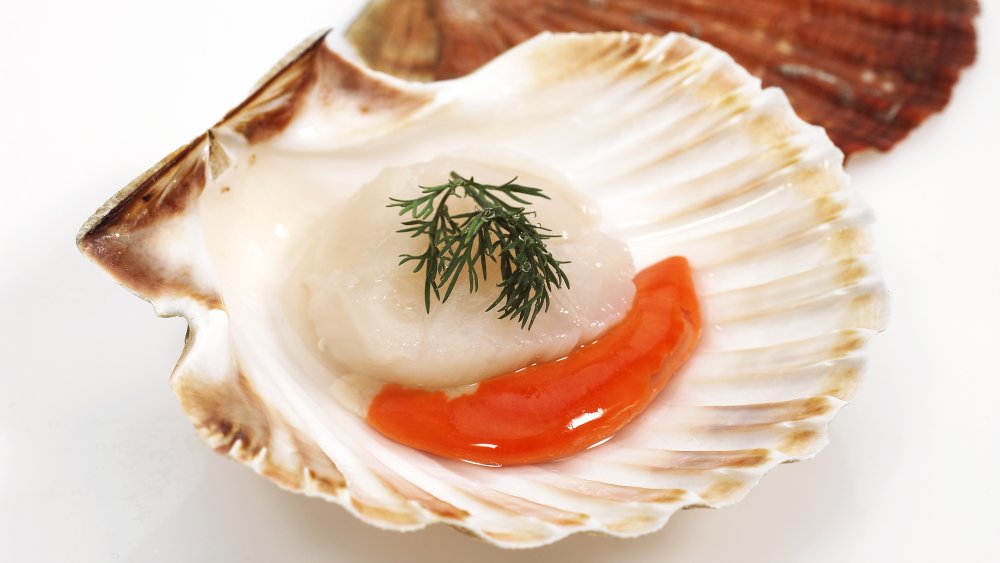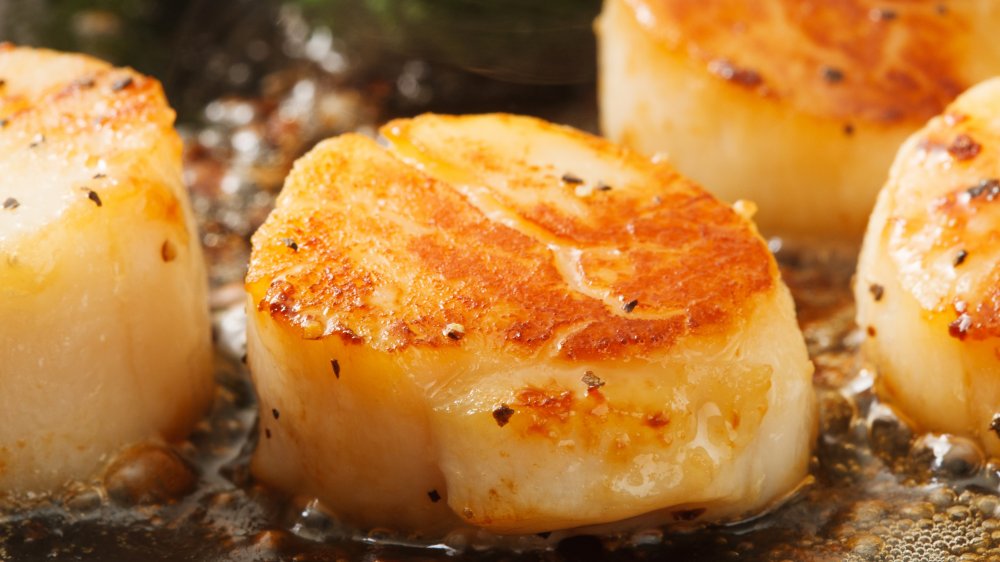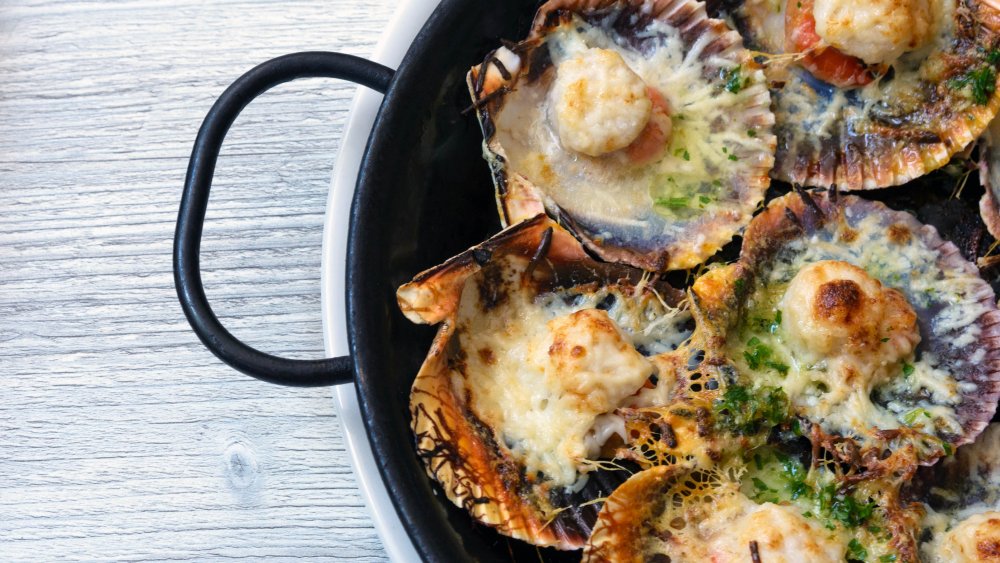Scallops: What Are They And Why Are They So Expensive?
They're related to oysters, clams, and mussels, but unlike their cousins, scallops have thinner shells that allow them to move forward on their own — so yes, you could say they swim (via Lobster Anywhere). While there are more than 400 different types of scallops available, The Spruce Eats says American diners will most likely encounter two types of this beloved mollusk: the bay scallop, which is on the small side, and the sea scallop which is about three times larger — or about 2 inches in diameter.
Lobster Anywhere also says scallops feed on small animals in the water, such as plankton. While scallops come with an orange abductor muscle, this appendage isn't used to filter water, so scallops don't absorb toxins the way clams and mussels do.
Not all scallops are expensive
Scallops are classified according to how many of them are needed to make a pound. The smallest scallops are 20/30 — which means between 20 and 30 are needed to make a pound. When scallops are classified as U/10 or U/15, this indicates that either less than 10 or less than 15 scallops will make a pound. The size and the weight will indicate how much of a premium a scallop might carry (via The Spruce Eats).
But not all scallops are expensive. The Spruce Eats says bay scallops, which are usually harvested from estuaries and bays located along the Eastern seaboard, and which can range in size between a half-inch to three-quarters of an inch, can cost as little as $9 per pound (via Fisherman's Cove). Because they are also more delicate, they are best enjoyed sauteed or deep-fried.
Unlike their bay siblings, sea scallops can grow to be about 1.5 to 2 inches in diameter. While most of these scallops are harvested using chain nets, there are also "diver scallops," which can cost a premium because these are larger and harvested by hand by divers. The Spruce Eats also says these scallops can cost as much as $30 a pound.
Scallops are at their best when they simply prepared
Healthline says these creamy, fleshy nuggets have 59 calories per 3 ounces and contain 10 grams of protein (depending on how they are prepared). Like all shellfish, scallops can have fat, but this presents itself as omega-3 fatty acid, which is good for your brain and heart. And while size can determine how they are prepared, scallops are generally at their best when they seared in a hot pan with a bit of olive oil or butter — although they can also be enjoyed raw, grilled, steamed, baked, deep-fried, or battered. They smell of the sea when they're raw, and are rich, sweet, and smooth when properly prepared.
Scallops can be purchased fresh or frozen, dry or wet. The Spruce Eats warns that buying wet-pack scallops can mean they are soaked in a phosphate solution that makes them whiter and heavier, so you could end up paying as much as $20 more per pound for water, which drains out of the scallops as you cook them — so if you want to avoid all that, look for dry pack scallops, which come with neither liquid nor preservatives.


